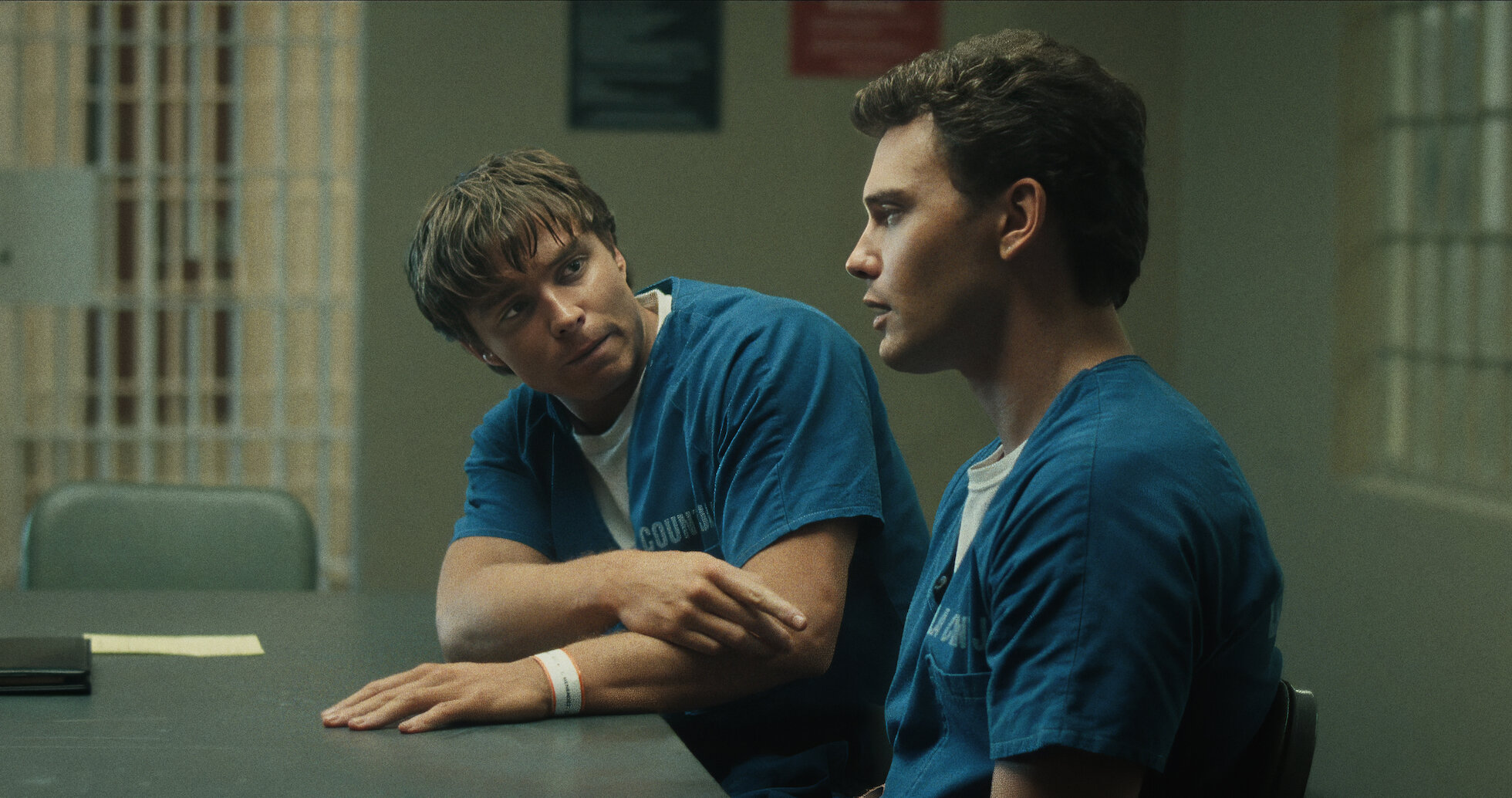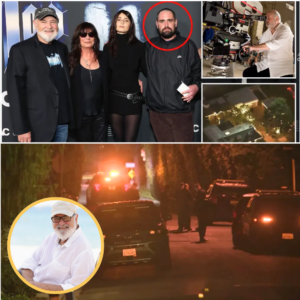In the frostbitten heart of 1950s Wisconsin, where cornfields whisper secrets to the wind and church steeples pierce the endless gray sky, a mild-mannered handyman named Ed Gein tended to his sagging family farm. To his neighbors in the sleepy hamlet of Plainfield, he was an oddity at best—a reclusive bachelor in rumpled overalls, quick with a shy smile and a helping hand for the elderly. But beneath the floorboards of his ramshackle home lurked a chamber of unspeakable atrocities: lampshades stitched from human skin, a belt of carved-off nipples, and a grotesque “mama suit” fashioned from the desecrated remains of the town’s women. Gein’s crimes didn’t just shatter a community; they scarred the American psyche, seeding the fertile soil from which slithered iconic slashers like Norman Bates, Leatherface, and Buffalo Bill. Nearly seven decades later, Netflix drags this primordial nightmare back into the light with Monster: The Ed Gein Story, the third installment in Ryan Murphy’s unflinching anthology series. Starring a gaunt, haunted Charlie Hunnam as the titular ghoul, this eight-episode descent premieres on October 3, 2025, vowing to eclipse the procedural chill of Mindhunter with a visceral autopsy of the soul. Here, the profiler becomes the profiled, and the monster—shockingly—is us.
The Monster franchise, co-created by Murphy and Ian Brennan, has always danced on the razor’s edge of true-crime voyeurism, blending campy excess with piercing social commentary. Season one, Dahmer – Monster: The Jeffrey Dahmer Story, cannibalized Milwaukee’s nightlife in 2022, racking up 856 million viewing hours while igniting debates on racial injustice in the justice system. Season two, Monsters: The Lyle and Erik Menendez Story, dissected the gilded cage of Beverly Hills dysfunction in 2024, humanizing fratricide amid allegations of abuse. But The Ed Gein Story plunges deeper into the abyss, trading urban glamour for rural rot. This isn’t a tale of calculated predation or familial implosion; it’s a slow-burn elegy for a fractured mind, forged in the crucible of postwar isolation and maternal tyranny. Murphy, ever the provocateur, frames Gein not as a born deviant but as a product of societal neglect—a thesis that elevates the series beyond pulp horror into a mirror for America’s unspoken cruelties.
At its core, the series chronicles Gein’s unraveling from 1944 to the mid-1960s, a timeline that captures the quiet desperation of the Midwest’s forgotten corners. We meet Ed as a 38-year-old odd-jobber, still shackled to the ghost of his domineering mother, Augusta, whose fire-and-brimstone sermons painted women as vessels of sin and the body as a temple of temptation. Augusta’s death in 1945 unleashes Ed’s latent horrors: nocturnal grave-robbing sprees at local cemeteries, where he exhumes fresh female corpses to “resurrect” his matriarch in profane rituals. The narrative builds inexorably to the flashpoint of November 1957, when deputy Frank Worden discovers hardware store owner Bernice Worden’s headless body dangling in Gein’s shed, gutted like a deer. What follows is a forensic fever dream: police unearthing a tableau of macabre artifacts—shrunken heads, a human-heart soup bowl, and masks flayed from faces—that propel Plainfield into national infamy. Yet Murphy’s lens lingers not on the gore but on the prelude: Ed’s stunted sexuality, his fevered hallucinations blending wartime newsreels with biblical fury, and the town’s willful blindness to a man unraveling in plain sight.
Interwoven with this biographical spine are hallucinatory vignettes that trace Gein’s ripple effect through pop culture. We witness Alfred Hitchcock, mid-production on Psycho, poring over Gein case files with his wife Alma Reville, debating how to transmute a real-life ghoul into celluloid psychosis. Flash-forwards to 1974 show a young Tobe Hooper, haunted by Gein’s “mama suit,” channeling it into the chainsaw-wielding frenzy of The Texas Chain Saw Massacre. Even a spectral cameo nods to Jonathan Demme’s The Silence of the Lambs, where Buffalo Bill’s skin-draped silhouette owes its silhouette to Ed’s handiwork. These meta-touches aren’t mere Easter eggs; they underscore the series’ thesis that Gein’s legacy isn’t confined to a Wisconsin jail cell but metastasized into Hollywood’s horror pantheon, romanticizing deviance while pathologizing the vulnerable. In one pivotal sequence, Ed—confined to Central State Hospital after being ruled unfit for trial—encounters Dr. Mildred Newman, a pioneering psychiatrist whose sessions peel back layers of repression, revealing a boy terrorized by his mother’s puritanical grip. It’s here that Monster transcends Mindhunter‘s clinical detachment, delving into the erotic undercurrents of Gein’s psyche: his fixation on “becoming” women, a twisted bid for maternal fusion that echoes Freudian nightmares.
Charlie Hunnam, the brooding biker from Sons of Anarchy and the ill-fated explorer of The Lost City of Z, undergoes a metamorphic transformation that anchors the series’ terror. At 45, Hunnam sheds 30 pounds to embody Gein’s emaciated frame, his once-rugged features hollowed into a spectral mask of perpetual twilight. “I wanted to inhabit him completely,” Hunnam revealed in a recent interview, his voice cracking with the residue of immersion. “Ed wasn’t a snarling beast; he was a whisperer, a shadow slipping through the cracks. Playing him meant excavating my own silences—the places where isolation festers.” Directors, led by Max Winkler (Flower, On the Count of Three), praise Hunnam’s method as both heroic and harrowing. Winkler recounts arriving on set in subzero Chicago exteriors, only to find Hunnam shivering in threadbare flannel, rehearsing Gein’s halting cadence amid blizzards that mirrored Plainfield’s emotional tundra. “What the f— did you do to yourself?” Winkler gasped upon seeing Hunnam’s skeletal silhouette, a moment of raw directorial awe that bled into the footage. Hunnam’s Ed is a masterclass in restraint: eyes darting like cornered prey, hands twitching with unspoken urges, his rare smiles blooming like fungi on decay. It’s a performance that invites revulsion and reluctant empathy, forcing viewers to confront the banality lurking in every unassuming neighbor.

The ensemble orbits Hunnam like moths to a flame, each illuminating facets of Gein’s fractured world. Laurie Metcalf, the Tony-winning chameleon of Roseanne and The Conners, channels Augusta Gein as a venomous virago—equal parts Bible-thumping zealot and emotional vampire—whose spectral presence haunts every frame post-mortem. “Augusta didn’t just raise Ed; she embalmed him alive,” Metcalf muses, her portrayal a tour de force of pious ferocity that rivals Jessica Lange’s American Horror Story divas. Vicky Krieps (Phantom Thread) slinks in as Ilse Koch, the infamous “Witch of Buchenwald,” in fever-dream sequences linking Gein’s atrocities to Nazi lampshade legends, a provocative nod to how global horrors seep into the American id. Olivia Williams (The Sixth Sense) brings icy poise as Alma Reville, dissecting Gein’s psyche alongside Joey Pollari’s wide-eyed Anthony Perkins, whose on-set jitters foreshadow Psycho‘s shower scene. Grounding the frenzy are Tyler Jacob Moore (Twisted Metal) as the tormented Sheriff Art Schley, whose suicide in the wake of the case exposes institutional rot, and Lesley Manville (The Crown) as the doomed Bernice Worden, her final hours a poignant portrait of small-town trust betrayed. Rookies like Addison Rae (He’s All That) and Suzanna Son (The Menu) inject fresh unease as peripheral victims and enablers, their innocence clashing against the encroaching dread.
Production on The Ed Gein Story was a logistical gauntlet, shot over five grueling months across Vancouver’s sodden forests (doubling for Wisconsin’s woods) and Los Angeles soundstages rigged with fog machines and flickering lanterns. Murphy, who executive produces alongside Brennan, handed directorial reins primarily to Winkler, a choice that infused the series with indie intimacy amid the anthology’s glossy sheen. Budgeted at a reported $120 million—rivaling Dahmer‘s cannibal feast—the shoot grappled with period authenticity: custom-built props mimicking Gein’s artifacts (crafted ethically from latex and silicone), dialect coaches drilling the flat Midwestern twang, and sensitivity consultants navigating the era’s mental health stigmas. Winkler, son of Henry Winkler, drew from family lore of Hollywood’s underbelly to balance horror’s histrionics with humanism. “Ryan gave us the freedom to linger in the quiet—the creak of floorboards, the rustle of newsprint—before the reveal,” he notes. Murphy’s fingerprints are everywhere: lavish needle drops (Nick Cave crooning over autopsy slides), operatic slow-motion kills, and sly winks to his American Horror Story oeuvre. Yet this Monster tempers the flamboyance, prioritizing archival verisimilitude—court transcripts, psychiatric evaluations—to honor the two confirmed victims, tavern owner Mary Hogan (disappeared 1952) and Worden, whose families consulted on set to ensure dignity amid the depravity.
What elevates The Ed Gein Story above Mindhunter‘s forensic chess is its refusal to psychologize from afar. Jonathan Groff’s Holden Ford probed killers like a clinician; Hunnam’s Gein bleeds vulnerability, his confessions a stammered litany of “Mama said no” that indicts the era’s failures: underfunded asylums, Freud-lite therapies, and a culture that fetishized the nuclear family while ignoring its fractures. Postwar America, flush with Levittown dreams, recoiled at Gein’s exposed underbelly—a reminder that prosperity’s flip side is alienation. The series weaves in broader indictments: how Gein’s schizophrenia went undiagnosed amid rural poverty, how media sensationalism (the Milwaukee Journal dubbing him “The Mad Butcher”) birthed a true-crime industrial complex still devouring Netflix hours today. Critics previewing early episodes hail it as Murphy’s most mature work, a “Hitchcockian heart of darkness” that grapples with monstrosity’s origins without excusing its ends. “It’s not about glorifying the ghoul,” one insider whispers; “it’s about exhuming why we keep digging him up.”
As premiere eve dawns, the internet hums with morbid anticipation. Trailers teasing Hunnam’s vacant stare and a blood-smeared farmhouse have amassed 50 million views, spawning TikTok dissections of Gein’s “fashion line” and Reddit rabbit holes on his unmade Hitchcock biopic. Fans, scarred by Dahmer‘s backlash, brace for ethical tightropes—will the series retraumatize Plainfield’s descendants, or empower them through accurate reckoning? Hunnam, wrapping promo with shadows under his eyes, demurs: “Ed’s story haunts because it’s ours— the darkness we all carry, waiting for the right storm.” In a streaming landscape glutted with jump-scare schlock, Monster: The Ed Gein Story promises something rarer: a horror that lingers not in screams, but in the silence after. Plainfield’s ghosts are stirring; tomorrow, they claim the screen. Sleep tight, America—the mama suit fits us all.

